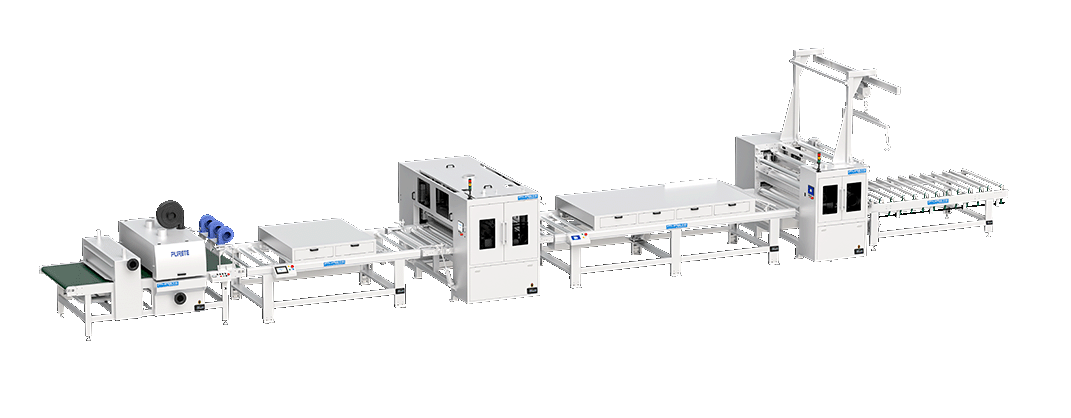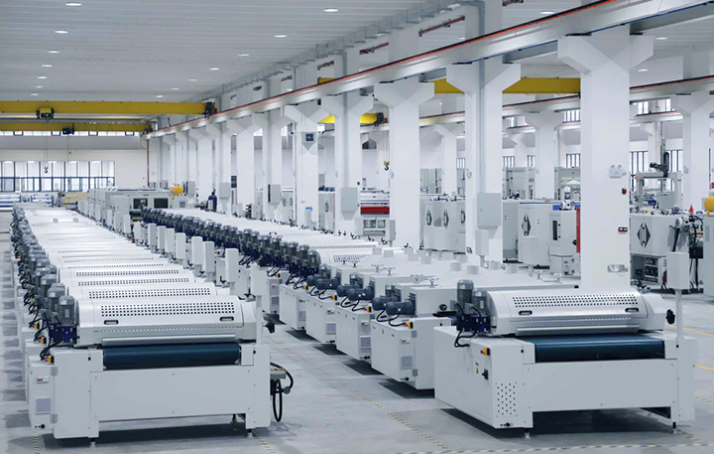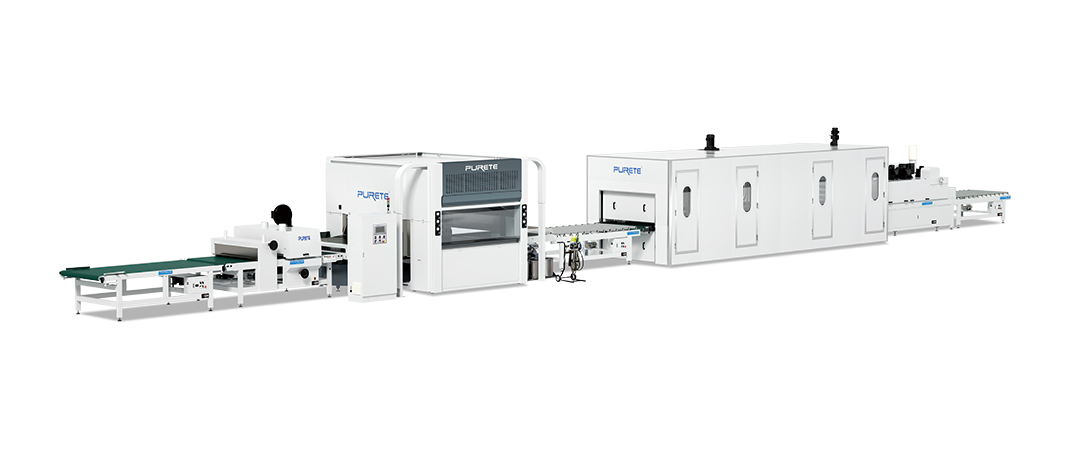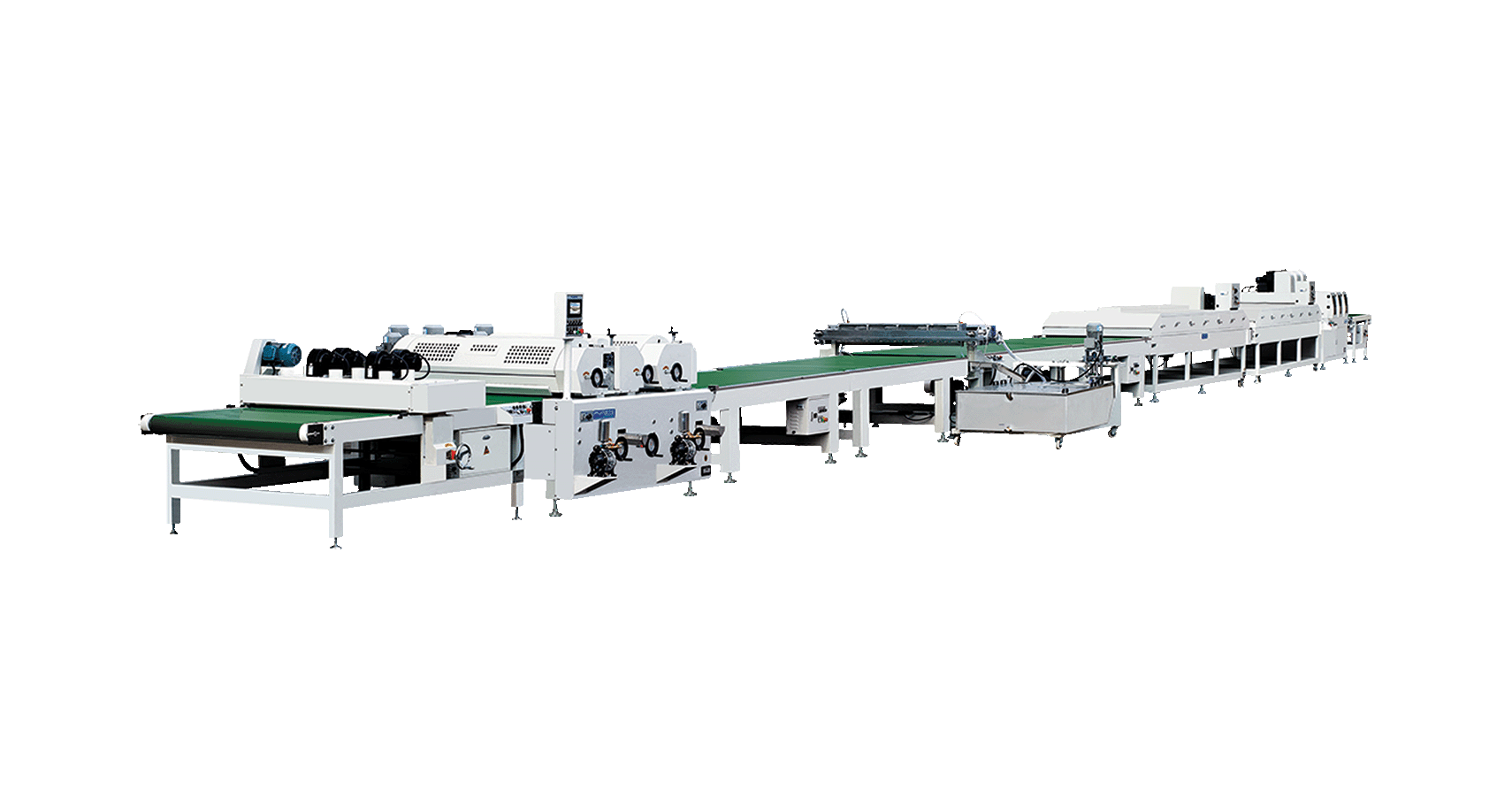What Is the Principle of Auto Coating Machine?
 May 08, 2025
May 08, 2025 Hits:687second
Hits:687secondIn modern manufacturing industries, surface treatment is a crucial step in enhancing product quality, aesthetics, and durability. Among various surface treatment technologies, the auto coating machine plays a pivotal role, automating the application of coatings such as paints, adhesives, lacquers, and other protective layers onto a wide variety of substrates.
Basic Concept of Auto Coating Machines
An auto coating machine is a mechanical device designed to automate the process of applying a uniform layer of coating material onto surfaces. It significantly improves production efficiency, ensures consistency, and reduces labor costs compared to manual coating methods. Auto coating machines are widely used in industries such as automotive manufacturing, electronics, furniture production, packaging, medical devices, and construction materials.
Depending on the specific application, coating machines can handle different materials and techniques, including spraying, rolling, dipping, curtain coating, and more. Despite the variations in technique, the underlying working principles share common elements.
Core Working Principles
1. Substrate Preparation
The coating process begins with substrate preparation. This is crucial because a clean and properly conditioned surface ensures better adhesion and uniformity of the coating. Preparation may involve:
Cleaning: Removing dust, oil, and impurities using air jets, brushes, or chemical cleaning agents.
Pre-treatment: Applying primers or activating the surface through plasma treatment or corona discharge to improve bonding.
Without proper preparation, the final coating may peel, crack, or fail prematurely.
2. Coating Material Delivery
The next key principle is the delivery of the coating material. An auto coating machine is equipped with a precise material delivery system that ensures the right amount of coating is applied consistently.
Pump Systems: High-pressure pumps transport the coating material from reservoirs to the application heads.
Flow Control: Flow meters and regulators maintain a consistent material flow, preventing defects like uneven thickness or dripping.
Material Mixing: In two-component coatings, the machine often integrates a mixing unit to combine components accurately before application.
Proper control of delivery pressure and flow rate is essential for achieving uniform coatings without waste.
3. Application Mechanism
The application of the coating onto the substrate is the heart of the auto coating machine. Different methods can be used, including:
Spray Coating: Atomizes the liquid coating into fine droplets using air or airless systems and sprays it onto the surface. It's ideal for complex shapes.
Roll Coating: A roller spreads the coating material over the surface, providing an even, continuous layer. Common in flat surfaces like panels.
Curtain Coating: Forms a continuous "curtain" of coating material through which the substrate passes, ensuring full coverage.
Dip Coating: The substrate is dipped into the coating material and then withdrawn at a controlled speed to form a uniform layer.
Slot Die Coating: Delivers the coating through a narrow slit directly onto the substrate, allowing precise control of thickness.
The choice of application method depends on the product geometry, coating type, required finish quality, and production speed.
4. Coating Control and Uniformity
Modern auto coating machines are equipped with sophisticated control systems to ensure that every product receives the correct amount and thickness of coating.
Thickness Sensors: Measure the coating in real-time and adjust the parameters automatically.
Speed Synchronization: Coordinates the speed of the conveyor and the application head to maintain a uniform coating layer.
Temperature and Humidity Control: Environmental conditions can affect coating behavior, so many machines maintain controlled environments.
Maintaining consistent application parameters ensures high-quality finishes and minimizes defects like orange peel, pinholes, or runs.
5. Drying and Curing
After the coating is applied, it must be dried or cured to achieve its final properties.
Hot Air Drying: Uses heated air to evaporate solvents quickly.
Infrared (IR) Drying: Uses IR radiation to heat the coating from within, speeding up drying.
UV Curing: For UV-sensitive coatings, ultraviolet light triggers polymerization, hardening the coating instantly.
Oven Curing: For heat-curable coatings, the substrate passes through an oven at controlled temperatures.
Efficient drying and curing are critical to achieving the desired mechanical strength, chemical resistance, and appearance.
6. Automation and Quality Control
Automation is a key part of modern coating systems. Programmable logic controllers (PLCs), sensors, vision systems, and robotic arms work together to ensure consistent operation and quality control. Features include:
Automated adjustment for different product sizes and shapes.
Real-time monitoring of coating quality.
Defect detection and rejection systems.
Data recording for process traceability.
This level of automation minimizes human error, optimizes material usage, and improves production repeatability.
Advantages of Auto Coating Machines
The use of auto coating machines offers numerous advantages:
Consistency: Uniform coating thickness across batches.
Efficiency: Faster production cycles compared to manual coating.
Cost-Effectiveness: Reduced material waste and labor costs.
Quality: Improved surface finishes with fewer defects.
Flexibility: Capable of handling various substrates and coating types.
These benefits make auto coating machines indispensable in modern production lines aiming for high throughput and high-quality standards.
The principle of auto coating machines revolves around precise control of material delivery, application, drying, and quality monitoring, all executed through advanced automation technologies. Whether through spray, roll, dip, or curtain methods, auto coating machines are designed to ensure consistent, high-quality surface finish for a vast range of products.
As industries continue to demand higher performance and aesthetic standards, the role of auto coating machines will only grow. Continuous innovations—such as the integration of artificial intelligence, machine learning for predictive maintenance, and more sustainable coating solutions—are set to further enhance their capabilities, making them even more vital to future manufacturing processes.















